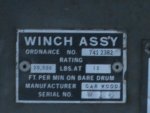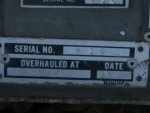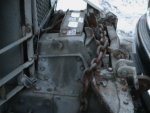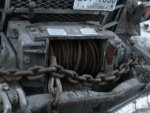I don't think you are hijacking the thread. The original question has been answered.
Unlike some unrealistic civilian non-industrial winch ratings, the GI winch ratings are pretty accurate. Take a look at a civilian "jeep" winch rated at 10K (without any industry or government safety standards, I might add) next to a 10K GI winch and you'll agree.
I wouldn't be surprised to find out that the limiting factor in the winch rating is the friction brake. It's got to hold the rated load if the shear pin breaks. It's a friction brake that wears and heats up when ever the winch is under power. As such, it seems to me to be the "weak link". You've got to keep it adjusted tight enough to hold the rated load but loose enough to not overheat. Kind of a damned if you do, damned if you don't kind of thing.
Your ultimate safety issue isn't in what you can pull, it's what you can control when the shear pin breaks and gravity is calling Murphey's name.
You could put a heavier cable on or replace the shear pin with a bolt but remember GI field equipment is designed so that an easy to replace expendable part, like a cable or shear pin, breaks before the hard to replace parts (like frame castings or soldiers) break.
Winch cables and shear pins will break under shock load easier than under constant tension. Being rough with the clutch pedal or hand throttle will break far more shear pins and cables than the load ever will.
Remembering that not much is worth dying for, I'd never modify a winch for anything less than a "life, limb or eyesight" emergency, which is the same standard used to launch a MEDEVAC flight and put it's crew at risk.
Lance








